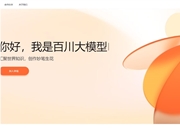Recently, the competition between AMD and NVIDIA, two major chip giants, has intensified, but unexpectedly, they have quietly embarked on a collaboration. AMD's EPYC processors are providing robust support for NVIDIA's GPUs in large-scale AI workloads.

Image Source Note: The image is generated by AI, provided by the image licensing service Midjourney
As the complexity of AI models continues to increase, the demand for GPU and CPU performance is rising sharply. AMD's EPYC processors have shown significant potential in enhancing the performance of NVIDIA GPUs. Ravi Kuppuswamy, AMD's Senior Vice President and General Manager, stated at the Advancing AI2024 event: "When EPYC CPUs are connected with NVIDIA's H100 GPUs, our training performance improves by 20%, and inference performance by 15%." He noted that this achievement was made using the Llama3.1 inference model with 8 H100 GPUs, where the CPU provides significant value for large-scale GPU clusters.
Kuppuswamy emphasized that this is a joint collaboration between AMD and NVIDIA, with both parties jointly identifying the best EPYC CPUs to optimize configurations between the CPU and GPU. It has been observed that AMD and NVIDIA have begun integrating EPYC CPUs into NVIDIA's HGX and MGX GPU systems to optimize performance for AI and data centers, leveraging AMD's high-core processors and NVIDIA's parallel computing GPUs to promote open standards for greater flexibility and scalability.
Madhu Rangarajan, AMD's Corporate Vice President, said: "We don't want to force customers to make choices... We will continue to push for open standards and interoperability with suppliers in the industry." He emphasized AMD's open stance in supporting diverse customer needs.
The combination of AMD's fifth-generation EPYC processors with NVIDIA's HGX and MGX GPU clusters is expected to elevate the performance of data centers and enterprise tasks to a new level. AMD emphasizes that even the fiercest competitors can collaborate to benefit customers.
Additionally, AMD has stated that its EPYC processors provide twice the performance of NVIDIA's Grace Hopper superchips in multiple data center workloads, showing clear advantages in general computing and energy efficiency.
Meanwhile, AMD has also entered into a collaboration with Intel, forming the x86 Ecosystem Advisory Group, gathering technology leaders to advance the development of computing architectures. Intel CEO Pat Gelsinger said: "We are on the brink of the most significant transformation in the x86 architecture and ecosystem in decades." AMD CEO Lisa Su also noted that this collaboration will pave the way for future architectural enhancements.
Key Points:
🌟 The combination of AMD's EPYC processors and NVIDIA's H100 GPUs improves training performance by 20% and inference performance by 15%.
🤝 AMD and NVIDIA are jointly promoting open standards to optimize AI and data center performance.
💻 AMD and Intel have collaborated to establish the x86 Ecosystem Advisory Group to drive the future development of computing architectures.









